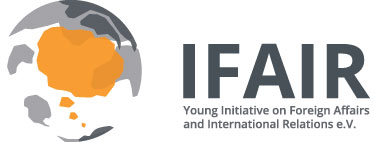
ASEAN at crossroads: What the Sino-American trade war means for Southeast Asia
Disclaimer: The views and opinions expressed in this article are those of the author and do not necessarily reflect the opinion of IFAIR e.V. or its members.
On September 1, 2019 US president Donald Trump imposed an array of new punitive tariffs on Chinese goods entering the US in what amounts to yet another escalation in the trade war that had been lingering ever since he took office in 2017. While the world once more held its breath as China reacted with retaliatory tariffs on US goods, the concerns about this latest escalation where likely the greatest in one of the regions rarely even mentioned in relation to the dispute. Being situated in one of the most geostrategically crucial regions in the world, the conflict between its two most vital trade partners puts ASEAN at crossroads. In fact, every foreign policy decision made in Washington or Beijing on their bilateral trade relations has direct implications for the future of Southeast Asia.
For decades, the United States have been the dominating economic and military power in Southeast Asia. Upon its inception in 1967, ASEAN was primarily founded as a loose alliance between the market economies of Southeast Asia with the purpose of propelling the region’s economic integration as well as to resist the then present expansion of communism. This anti-communism position rendered the US a natural ally of ASEAN. To this day, the US government maintains close military and political ties to the majority of ASEAN’s member nations. In 2008, the United States were the first non-ASEAN country to officially nominate an ambassador to ASEAN and in 2010, a permanent US Mission to ASEAN was established. The economic ties to the alliance are even more significant. In 2010, the US exported $ 81 billion worth of goods to ASEAN, a tally that is expected to rise to $ 152 billion by 2025. In 2010, US companies held a total of $152 billion of FDI in ASEAN member states. By 2025, this number is expected to reach $452 billion. Overall, US trade volume with ASEAN member nations totaled $272 billion in 2018. Invariably, ASEAN member states, estimated to double their GDP per capita until 2025, will continue to grow in significance as one of the most vital trading partners for the US.
In recent years however, the mounting economic strength of China has dramatically increased the cooperation between the two regional partners. Despite the relatively late interest of Beijing in ASEAN – diplomatic relations commenced as late as 1991 – China has rapidly overtaken the US as ASEAN’s largest trading partner. In 2003, the Chinese-ASEAN Free Trade Agreement was signed and entered into force in 2010. Ever since, trade between China and ASEAN has skyrocketed. Whereas in 2003 the added trade volume between China and ASEAN amounted to a mere $59 billion, in 2017 the Chinese ministry of Commerce declared that it had reached a value of $514 billion dollars. Trade between the two powers is destined to continue to rise exponentially, with President Xi even declaring the ambitious goal of having it surpass $1 trillion by 2020. Apart from the existent economic relations, the countless Chinese infrastructure projects planned in Southeast Asia as part of the country’s Belt and Road Initiative (BRI) are considered to be instrumental to the initiative’s success; for this reason, China also has significant geopolitical stakes in Southeast Asia.
It is important to note at this point that the foreign policy focus of ASEAN member states is far from homogenous. States with historically close ties to China – such as Myanmar, Cambodia and Laos – are highly reliant on Chinese imports and exports while simultaneously fostering their political and strategic cooperation with Beijing. On the other hand, a large number of ASEAN member states has similarly important economic relations to both the US and China, with the two countries each making up around 11 percent of the exports of Thailand and Indonesia in 2017. For Vietnam, the US still remains to be the largest export partner. In 2010, more than half of the total US FDI in ASEAN was invested in Singapore. In the event of an exacerbation of the trade war, ASEAN therefore faces the dire prospects of a rupture between its members, the reason being that some nations would be likely to seek closer relations to China whereas for others, the advantages of their relationship with the US would overweigh cooperation with China. Although such a scenario, in which ASEAN member states seek exclusive alignment with either the US or China, is generally deemed unlikely, the current unpredictability of US foreign policy makes it imperative not to entirely rule out this eventuality.
On the contrary, up to this point, a completely different effect of the trade dispute on ASEAN has been observed. Numerous pundits have noted that in fact, ASEAN has profited from the US-Chinese trade war and suggest that it will continue to have a positive effect on its economies. This is mainly because US sanctions against China have led to a diversion of trade and investment from China towards Southeast Asia. Due to the fact that China is bound to become an industrial country in the near future, it is already experiencing a shift towards the tertiary sector and is therefore in need of a new manufacturing base for its economy. Close to Yangon, Myanmar, China is currently constructing an industrial city of unprecedented scale, envisioned to create more than 2 million jobs for Burmese workers. Simultaneously, the sanctions against China render Southeast Asia an attractive region for the manufacturing sites of US companies.
In spite of this, ASEAN countries are not expected to derive permanent advantages from the trade dispute in the long run. Even worse, Washington’s predatory trade doctrine may provoke its government to levy tariffs against ASEAN member states themselves as soon as the “relocation effect” caused by the Sino-American dispute has reached a certain level. Should this occur, a tilting of some ASEAN member states towards China would be inevitable and result in the alliance’s rupture. Due to this, ASEAN cannot have a genuine interest in a deterioration of the relations between the US and China, irrespective of the temporary benefits resulting therefrom. On this point, Singapore’s Prime Minister Lee thus recently declared: „All of us are going to be negatively impacted if those ties turn sour, and I think there’s a high degree of recognition of that and a great desire that third countries don’t become collateral damage if there is friction or worse between the big powers“. At any rate, it is better for ASEAN not to choose sides in the conflict. Any policy decision taken in Beijing or Washington however may radically alter the situation ASEAN member states find themselves in and thus lead to a friction between its members. In the coming years, the stability and geopolitical role of ASEAN will undoubtedly not be decided in Jakarta, but in Washington and Beijing. Only time will reveal the alliance’s fate.
References:
- https://www.kas.de/c/document_library/get_file?uuid=82c2ab5a-b943-c833-f1e9-08700bc23d57&groupId=288143
- https://www.straitstimes.com/singapore/us-china-trade-war-could-have-some-positive-spillover-effects-for-region-experts
- https://asean.usmission.gov/
- https://ustr.gov/countries-regions/southeast-asia-pacific/association-southeast-asian-nations-asean
- https://www.scmp.com/comment/insight-opinion/asia/article/2173343/how-us-china-trade-war-will-make-or-break-asean
- https://www.straitstimes.com/asia/asean-concerned-about-us-china-trade-war-focused-on-economic-cooperation-pm-le
- ASEANFocus (6/2018), p.6-7: „ASEAN amidst the US-China rivalry“ (Prof. Dr. Dewi FortunaAnwar)
- Economic data and information: World Trade Organization (http://stat.wto.org/CountryProfile/WSDBCountryPFReporter.aspx?Language=E)

